Media Magicians
COM alums are working at the forefront of their fields
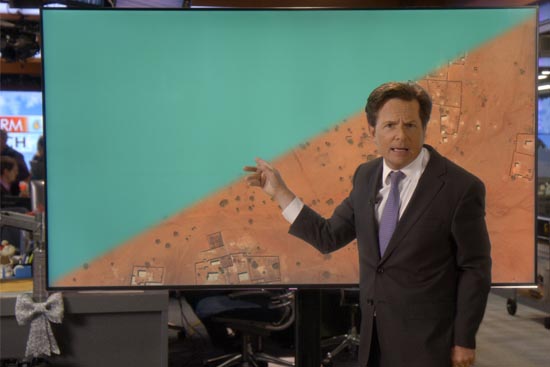
Visual Effects Producer Mike Gaines created this TV monitor effect (shown as a before-and-after image) for the Michael J. Fox Show. Photo courtesy of Sony Pictures Television
From researching for Disney’s new theme park in Shanghai to promoting mobile health technology, alumni from the College of Communication are leading innovation in industries across the globe. Below, we take a look at eight of them.
Smoke, Fire and Blood
Mike Gaines (’04), visual effects producer at Sony Pictures Television
The gun flashes—a puff of smoke, a burst of fire. In an instant, the victim is falling, blood showering from the air and spattering the desert floor.
Take away the visual effects and you’re left with a spartan picture: one actor aims a fake gun, another drops backwards.
The murder scene in FX’s Outlaw Country got its smoke, fire, and blood courtesy of Visual Effects Producer Mike Gaines (COM’04). It’s the sort of illusion that once took most of the week; now, electronically conjuring a cloud of smoke from a muzzle can take as little as 30 minutes. In five years, speculates Gaines, it might be inserted with the push of a button. “That would be amazing,” he says. “I’d also probably be out of a job.”
For many media professionals, especially those like Gaines who are in cutting-edge fields, it’s the specter hovering in the background. If the august Los Angeles Times can use a robot to write news—its Quakebot algorithm turns out stories on earthquakes for review by an editor—could technology render much of humans’ work in media obsolete?
“That’s why I’m a huge gadget geek,” says Gaines, who studied film at COM and leads a team of effects artists at Sony Pictures Television in Culver City, Calif. “I know it’s going to help my job in the long run if I know all this cool new gadgety stuff, because in five years it could all be different.”
The next big change for him is likely to be 4K—televisions that show a picture so crisp, it’s virtually impossible to spot a pixel. “Just imagine how much more detailed our work would have to be,” says Gaines.
His approach to technology is to dive in—he learned visual effects through a combination of YouTube tutorials and experimentation—but Gaines believes computer wizardry has its limits.
“The only thing that’s really changing is the technology,” he says. “How do we harness that and still tell great stories? People are going to go to the movies, and who cares if it’s in 3-D, 4-D, holograms, or whatever? If there’s not a good story, nobody’s going to like it.”
Watch Mike Gaines’ showreel here.
Race to the Headline
Rakshita Saluja, homepage editor at Bloomberg.com
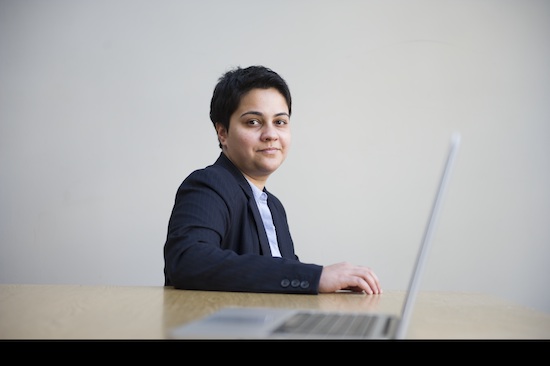
Where to start? That would seem to be the challenge for Bloomberg.com’s homepage editor, Rakshita Saluja (COM’12). Bloomberg LP, the financial, media, and technology powerhouse, has 150 news bureaus worldwide turning out 5,000 stories every day; Saluja has to decide which ones make it to the homepage. Even with spots for more than 100 text-led stories—plus panels for video- and data-driven pieces—there’s only room for about 2 percent of the media giant’s daily output at any time. And little respite to dally over decisions.
“I’m a complete news junkie; I stare at the wire all day,” says Saluja, who spends just as much time looking at the site’s analytics. “News just moves so quickly. Seconds matter to us when we beat our competition with a headline.”
A former TV news producer in India, Saluja didn’t come to the United States to join a company with 15,500 employees—she came to start her own business. When she completed COM’s Media Ventures program, which mixes courses in technology, business, and media, she envisioned building a company that would give Indians better access to foreign news. A job offer from Bloomberg in New York put that firmly on the back burner, but Saluja says the COM program’s entrepreneurial emphasis—students are encouraged to take internships at start-ups—wasn’t wasted.
“We’re primarily a technology company, and we’re constantly innovating,” she says of Bloomberg. “We want to be the first and the best at everything, and that’s always how I’ve tried to work and model my work ethic.”
Still, Saluja’s daily goal wouldn’t sound that out of place to a newspaper editor 100 or 200 years ago. Her job is to “keep the page dynamic, fresh, interesting, varied, and try and make it a one-stop shop,” she says. “If you come to Bloomberg.com and the homepage, you get your fill of news. You don’t need to go anywhere else.”
From TV Screen to Second Screen
Sergio Floris, head of entertainment for Twitter in Brazil

In the six months that Sergio Floris (COM’12, GSM’12) has been the head of entertainment for Twitter in Brazil, he’s achieved what feels like two years’ worth of progress. Twitter is still a relatively new platform for the country, he says, so at first “people didn’t know the difference between Twitter and the other social networks.” He had to “market what it is, and what we can bring to the table,” before he could begin his real work: developing innovative ways to integrate the platform with the country’s TV and music industries.
Twitter’s value for the industry is that it’s a public platform, Floris says. People use other social media like Facebook and Instagram to connect with their friends, and if they mention a television show or musician, those conversations are private. Twitter, however, allows TV stations or musicians to engage directly with audiences. The big question for Floris is, “How can we integrate the audience with Twitter and reward them for their participation?”
During the 2014 World Cup, Floris, who earned a degree in COM’s Media Ventures program, developed a game prediction campaign in which a sports station ran hashtags along the bottom of the screen, inviting viewers to tweet their game predictions. The anchors discussed the tweets on TV, drawing users into the show and making Twitter a “second screen” for audience engagement. The station also acknowledged viewers’ participation by featuring photos of team captains holding shirts customized with individual viewers’ Twitter handles. “Twitter became a tool to further the discussion” soccer fans were already having in their living rooms, Floris says. The World Cup was the biggest event in Twitter history—in Brazil and throughout the world. On the day of his country’s match against Mexico, alone, Floris counted around nine million tweets in Brazil. In the wake of the World Cup frenzy, Floris is scouting new opportunities for attracting Twitter users to the second screen.
The Chubby Bunny Challenge
Kase Wickman, writer/editor for MTV News

Remember Chubby Bunny, the game where you see how many giant marshmallows you can cram into your mouth while repeating those two words? Kase Wickman (COM’10), a writer/editor for the MTV News website, felt a little silly explaining the rules during a meeting about Veronica Mars, but she plowed ahead with her idea. MTV had snagged screen time with the cast of the hit television show-turned-film, whose fans are dubbed “marshmallows”—and Wickman suggested filming the actors playing the children’s game. Her colleagues thought the idea sounded fun, as did star Kristen Bell and the rest of the Mars cast. Bell won the challenge with 15 marshmallows, and MTV’s irreverent video went viral.
“We take the movies and pop culture we’re interested in and skew them in a different way that will make people think, ‘Oh, I hadn’t thought of it that way before,’” says Wickman, who studied journalism at COM and works out of New York City. She thrives on the challenge of making her work stand out among the other entertainment and pop culture sites, all of which have access to “the same raw material,” she says. “If a movie is coming out this weekend, everyone’s going to know it’s coming out, no matter what we say about it. So what’s important is the interesting, fun, creative way we come up with to present it.”
Many entertainment sites peg stories to new releases and create content driven by analytics, she says. While it’s important to monitor click-through rates, how readers get to her stories, and how long they are staying on the site, Wickman doesn’t let analytics constrain her content. Some coverage will always be successful (“If we got to premiere a new Harry Potter trailer, of course that would do super well.”), but Wickman believes in taking creative risks. “If you’re playing it safe all the time and only serving up straightforward things that you know people are going to click on, then you’re not serving your readers.”
Watch the cast of Veronica Mars play Chubby Bunny.
Marketing the Modern-Day House Call
Catherine Anderson, marketing and PR manager for American Well Systems
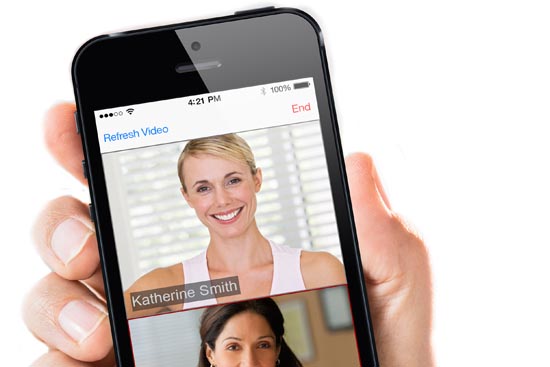
In the metropolitan United States, the average wait for a doctor’s appointment is 18.5 days—but a new app is making it easier for patients to get help when they need it. Launched in October 2013, the American Well app allows patients to select a physician and immediately talk by video call with one of more than 1,000 doctors who are available 24/7. In the course of a 10-minute appointment, the physician diagnoses illnesses, prescribes medications, and writes referrals, all for less than $50. “It’s sort of like a modern-day house call,” says Catherine Anderson (COM’10, MET’14), who works in Boston as American Well’s marketing and PR manager.
A big part of Anderson’s job is to get people interested in the app while they’re healthy, so they’ll be familiar with the technology when they feel ill. That’s where her background in journalism and PR comes into play; her previous work includes interviewing New England Patriots players for WEEI 93.7 FM, interning at the US Navy’s public affairs office at the Pentagon, and serving as deputy director of communications for Al Gore’s clean energy campaign. These roles taught her to anticipate reporters’ needs and help them to craft stories while also promoting American Well’s mission. “That might mean reaching out to a reporter who has written a piece on the national shortage of primary care physicians and explaining the role that telehealth”—the delivery of health services through electronic communications—“can play as a solution to this problem,” she says.
Anderson’s savvy approach and her collaboration with colleagues, including marketing manager Emily Wolfe (COM’09), has resulted in more than 50 stories in outlets like USA Today, the Wall Street Journal and the New York Times. American Well has signed up more than 250,000 consumers to date.
Social First
AJ Vaynerchuk, cofounder of VaynerMedia
VaynerMedia, a digital agency cofounded by AJ Vaynerchuk (CGS’07, COM’09), masterminded a GE campaign that used this video to inspire a weeklong Vine-based science fair. Photo courtesy of VaynerMedia
“What happens when you combine milk, food coloring, and dish soap? #howto #6secondscience”
If you’re GE, which promoted this question online with a 6-second video showing the experiment, the answer is 130,000 likes and 105,000 revines. The company used the video to inspire a weeklong Vine-based science fair. When it asked, “How much science can you fit into 6 seconds?” the looping video site was flooded with user-generated science experiments.
The August 2013 campaign was masterminded by VaynerMedia. Since its founding in 2009 by AJ Vaynerchuk (CGS’07, COM’09) and his brother Gary, VaynerMedia has grown from 5 employees to 400 in New York and California. It’s also been named among Advertising Age’s top 10 agencies to watch.
That the digital agency so visibly connected 123-year-old GE with Vine, a platform that had been in existence for about seven months, says a lot about the company’s success. And, says AJ Vaynerchuk, about its founding.
“The big thing that makes us different is that we’re social first; unlike a lot of other agencies in this space, social is where we started,” he says. When they launched the company, VaynerMedia’s cofounders had no agency experience. But they both knew a lot about the fledgling social media industry and loved start-ups (they recently helped launch a $25 million venture capital fund to support new ideas).
“I think we bring a fresh perspective,” says Vaynerchuk, the company’s chief operating officer. “Social media is a space that moves very fast, and we’re well positioned to move at that pace.”
Vaynerchuk also credits the combination of courses he took at COM—advertising and computer science—for giving him a head start.
“When we started VaynerMedia, nobody thought it was a good idea; they thought the social media thing was a flash in the pan,” he says. “But I think that’s why we won, because by the time the market matured, it was already too late. We’d made our footprint, learned every lesson, and were well on our way.”
And for the curious: milk + food coloring + dish soap = a really cool, moving kaleidoscope.
Watch a video of the experiment.
New School
Padrick Ritch, production supervisor at Harvard University’s Hauser Studio
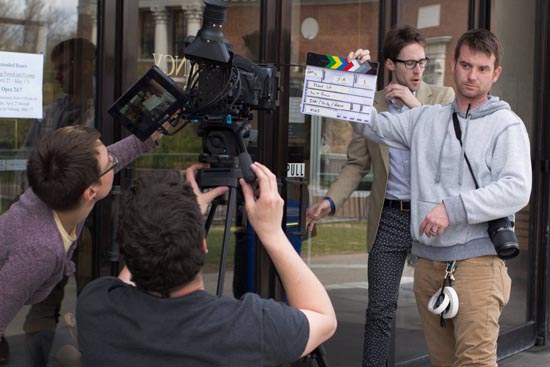
It’s a teacher-to-student ratio most schools wouldn’t shout about: 1 to 17,000. But they were the numbers for Sabermetrics 101, BU’s MOOC (massive open online course) on baseball analytics offered this spring through the online learning consortium edX. The group hosts more than 175 courses from the world’s premier universities for a global audience of millions—for free.
It’s new territory for everyone involved—for those teaching and learning, and for the behind-the-scenes tech experts making sure everyone can log on and get learning.
At Harvard, an edX founder, the challenge of broadcasting lectures around the world falls to Padrick Ritch (COM’12), a production supervisor at the university’s Hauser Studio. He helped build the studio, which can also handle live transmissions, from scratch. It’s all so new, some of the equipment arrived after the first recordings.
“There’s a huge difference between lecturing in front of a classroom and lecturing in a studio to a camera,” says Ritch of the learning curve facing even those with multiple diplomas. The Harvard team has about 20 courses in production and another 20 up and running. Some professors nail it on the first take, says Ritch; others get a little help from voice and acting coaches. Ritch teaches production classes at COM as a lecturer in film and television, and he has two independent films in the works. Still, he knows his limits.
“The classes are on anything from computer science to quantum physics,” he says. “My expertise in production might be one thing, but it doesn’t mean I understand the content they are trying to deliver. My job is not to be noticeable with the camera angles and the lighting. If we do our job right, the content sticks out by itself.”
For his own teaching, the class numbers are a little more manageable than in MOOCs—BU boasts a non-virtual faculty-to-student ratio of 1 to 13. “The best way that I like to stay current and keep fresh with how things are changing,” he says, “is working with students.”
Check out BU’s MOOCs—from studying poetry with Robert Pinsky to exploring alien worlds with Andrew West.
Making Disney Magic
Fei Hao, researcher at Shanghai Disney Resort, China

A family trip to Disney World can be hectic. You need hotel rooms, park passes, meals, transportation, souvenirs. But what if you could order everything online from home, then check into your hotel, enter the park, feed your family, and purchase postcards, all with the swipe of your wrist? Disney World’s MagicBand allows guests to do just that, and as a consumer insight analyst intern, Fei Hao (COM’13) monitored its 2014 rollout at Walt Disney World Resort in Orlando, Fla. Hao conducted focus groups and guest interviews to ensure that the device simplified the Disney experience so families could focus on fun.
In 2014, Hao transitioned to the position of researcher with the team responsible for developing Shanghai Disney Resort in China. As a China native who had studied and worked in the United States, Hao understands the Disney brand—and how to optimize it for Chinese audiences. The Chinese have a different perception of Disney than Americans do, Hao says, and are generally familiar only with traditional characters like Mickey, Minnie, Goofy, and Daffy Duck. Before the park opens, Hao’s priority is to educate consumers about the Disney brand and what the resort can offer them. “It’s not only about characters,” she says. “We have a lot of other exciting things,” including rides and merchandise exclusive to Shanghai Disney Resort. The resort will be the first to feature a Pirates of the Caribbean–themed land, for instance, which will include the high-tech boat ride adventure Pirates of the Caribbean: Battle for the Sunken Treasure.
Hao is conducting “research to understand the tourism industry development in China, and Chinese consumers’ attitudes on travel and leisure.” The research involves testing elements of the resort, including merchandise concepts, to ensure that the American brand is customized to their tastes. When the park opens, Hao will have ensured that it will be “authentically Disney—and distinctively Chinese.”
Lara Ehrlich can be reached at lehrlich@bu.edu. Andrew Thurston can be reached at thurston@bu.edu.
A version of this story was published in the Fall 2014 issue of COMTalk.
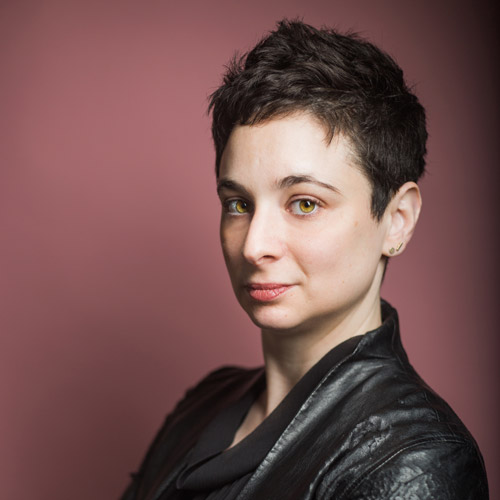
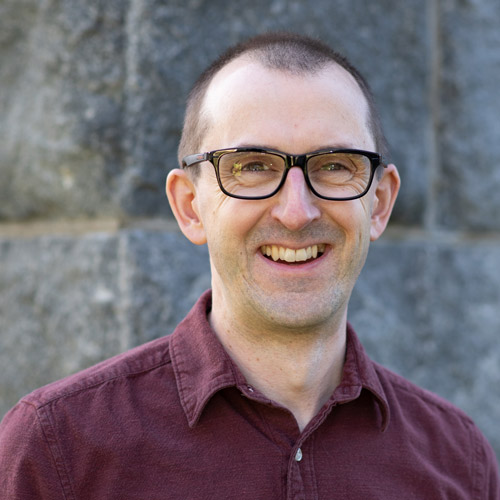
Comments & Discussion
Boston University moderates comments to facilitate an informed, substantive, civil conversation. Abusive, profane, self-promotional, misleading, incoherent or off-topic comments will be rejected. Moderators are staffed during regular business hours (EST) and can only accept comments written in English. Statistics or facts must include a citation or a link to the citation.